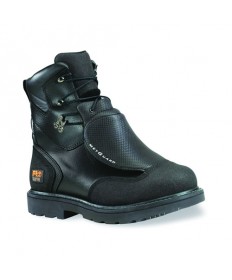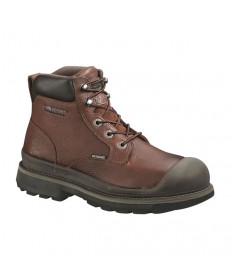It’s generally accepted that when the toe of a safety shoe has the leather worn off the toe, regardless whether the shoe is Steel Toe, Alloy Toe, or Composite Toe, the safety shoe should be replaced. It’s kind of like a tires that are worn to the warning tread, or a rope or belt that is getting “frayed”, or safety glasses that has scratched lenses. In fact, my rule is that if there is any “hole” or crack in exterior leather of the safety boot, then the boot should be replaced because the integrity of the safety boot has been compromised potentially exposing the foot to external environmental conditions and substances.
Safety Shoes are tested for Electrical Hazard properties in a brand new state inside a clean laboratory. As the boot is worn, the leather and linings harbor more moisture from perspiration, the soles get thinner, and it’s a given that safety shoes are significantly “weaker” the older they get. So the question is, “how do you determine the point at which shoes need to be replaced?” It’s certainly a “judgment call”, but typically the most obvious sign is when the safety toe is showing through a hole in the leather of the boot’s toe. Another sign is when the pattern on the sole is worn down significantly (before it gets slick). Additionally, if the integrity of the safety shoe is compromised by a crack in the leather at the sole or in the flex area of the front of the boot and this “hole” in the leather directly exposes the foot to the environment, then that shoe should be replaced. sometimes the leather will show a lot of distress from the environment (welding burn marks, cuts in the leather, etc.) before the leather cracks and when that happens, the shoe should be replaced also.
If concerned that bare steel toe would expose you to a live wire hitting it, that same exposure would be there even with the same boot without the bare steel toe. The leather will still conduct electricity due to the moisture in the leather and linings, and the insulating properties of leather would be minimally better than the bare steel. Regardless, in my opinion, you should replace safety toe shoes when the leather is worn.
That being said, there are several products on the market that allow you to either glue a reinforcement material to the toe of the boot or “paint” a scuff-resistant material on the toe of the boot to preserve the life of the leather covering the toe of the boot. Sometimes your job or tasks require you to be on your hands and knees, which can prematurely wear the leather off of the safety shoe toe. When that happens, it’s a sign the shoes need to be replaced even though they are not “worn out”. These products help prevent prematurely wearing the leather off the safety toe, and this can help you if that is the case with your safety toe shoes.



